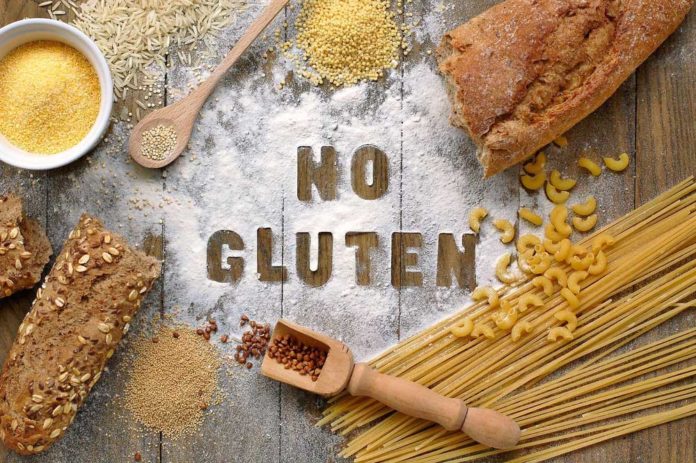The hype of a gluten-free diet has provoked many followers. But considering just how deep gluten in the food supply actually is, many individuals may not realize what a gluten-free diet truly entails and just how overwhelming it may be. And for those with Celiac disease or a gluten intolerance or sensitivity, gluten’s elimination is the only known treatment option at this time. So how can beginners make the switch to a gluten-free diet with both ease and success? Here are eight tips!
Gluten-Free for Beginners
First off, gluten is a protein found in barley, rye, wheat, and their associated products, including wheat pasta, rye bread, and so on. Individuals living with Celiac disease, or potentially a gluten sensitivity, are prescribed to a gluten-free diet to reduce unpleasant signs and symptoms that are caused by its ingestion. While stripping away gluten-containing products may seem simple, its success may be a little more difficult. Particularly related to cross-contamination in food processing and manufacturing, gluten may contaminate naturally gluten-free products. For example, oats are generally considered safe, but are often manufactured in food plants that also process wheat, subsequently heightening the risk of impurity. While food industries work diligently to ensure product safety, cross-contamination can also occur at home or in restaurants, including in the fryer from batter or the toaster from bread. Unlikely sources that contain gluten include sauces, dressings, yeasts, medications, and other sources found here. But switching to a gluten-free diet can be a more seamless transition with these seven tips for beginners!
How to Switch to A Gluten-Free Diet
1. Check Labels
Especially if new to label reading, its practice may be a little overwhelming. But labels tell the story of not only the nutritional profile of food, but the ingredients that comprise them. The U.S. Food and Drug Administration (FDA) also issued the term “gluten-free” for voluntary use, with food products bearing the claim meeting set requirements of the gluten-free labeling rule.
2. Choose Color
Fill the diet with nature’s bounty, as fresh fruits and veggies are naturally gluten-free. Rather than intertwining between the grocer’s aisles, gravitate to the produce section. If you are to choose canned or frozen products, continue to check the labels, as some varieties may contain gluten-containing preservatives.
3. Experiment with Grains
As a general healthy guideline, most nutrition experts encourage choosing whole wheat products over refined, white grains. The new gluten-free recommendation may throw a curveball to this advice, although grains other than wheat are still highly beneficial. A gluten-free diet is essentially a window of opportunity to experiment with gluten-free grains you may be uncomfortable with, including quinoa, flax and chia seeds, and nut flours.
4. Make Your Own Sauces and Dressings
While most sauces and dressings are a hidden source of gluten, they can still be enjoyed and compliment foods. Additionally, most commercial products are loaded with unnecessary sugars, fats and oils, offering you control over ingredients when prepared at home. If needing or desiring inspiration, here are five healthy, gluten-free salad dressings and sauces!
5. Chat with Restaurant Servers
Especially when initially advised to a gluten-free diet, safely going out to eat and avoiding gluten may seem implausible. And while chatting and discussing gluten-free options with restaurant servers and chefs may be uncomfortable at first, continuously doing so will make the conversation easier with each passing time. Their awareness of the situation can further ensure their need to remain compliant with cross-contamination procedures.
6. Relish Safe Foods
Rather than dwelling on what you need to give up, appreciate all that is left to enjoy. Feeling restricted from foods can ultimately increase the likelihood of burnout and dull food appreciation. Along with these gluten-free foods, food companies are raising their efforts in providing gluten-free options to their consumers. It is important, though, to not translate “gluten-free” as “healthy.” Just because some products are absent of gluten, does not indicate they are low in calorie or free of sugar, fat, and salt.
7. Join Support Groups
Individuals new to understanding and following a gluten-free diet may seem overwhelmed and maybe even isolated. Joining a support group can be valuable for newbies not only for capturing more tips, but to gain encouragement for the new lifestyle. In addition to joining others following a gluten-free diet, start educating close friends and family members on the new guidelines, as they can further assist in reaching and sustaining your success!
8. Confine in A Meal Delivery Service
Although the tips can simply your life, a gluten-free meal delivery service can simplify it even more. Taking care of all the busy work, Balance by bistroMD delivers gluten-free meal options straight to your doorstep! Find more about this a la cart meal service here.








